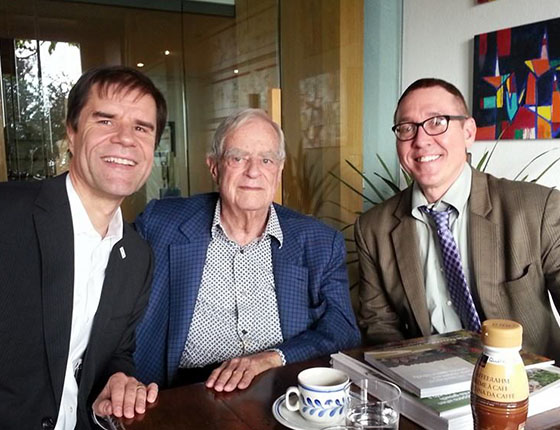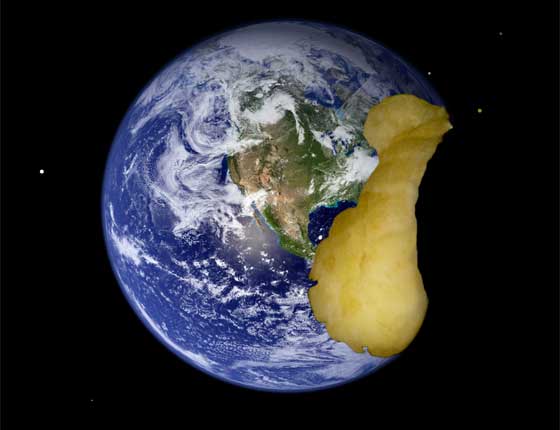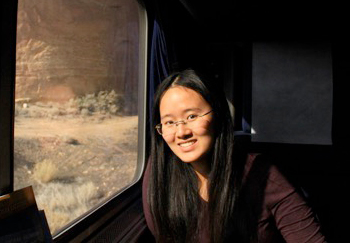
For the first time, Global Footprint Network is partnering with other NGOs to support both sustainable and human development at the community level in India. While Global Footprint Network projects often target decision-makers at the national, sub-national, and city levels, this new pilot in India aims to give local villagers a more informed voice in shaping development in their communities. The project, titled “Sustainable Development Return on Investment: Empowering Communities and Measuring Investment Effectiveness,” or SDRoI, is a partnership with International Development Enterprises-India, Gram Vikas (of India) and Fundación Escuela Nueva (of Colombia).

Pragyan Bharati (right), Global Footprint Network’s India director, is leading the 18-month project. She holds a doctorate in sociology and is a social development specialist with experience in leading various water and sanitation projects with ONE DROP, UNICEF, and the government of Odisha’s Ministry of Rural Development.
We asked Pragyan a few questions about the new project.
1. Where in India are you working?
PRAGYAN: I live in the eastern coastal state of Odisha, and that’s also where the project is taking place. The state is rich in natural resources, minerals and biodiversity. It also has a unique cultural heritage with 62 different indigenous tribes living there. However, the state has a high incidence of poverty.
It’s a tropical area with high temperatures and recurring natural disasters like cyclones, floods and droughts. Last year the state was hit by the severe Cyclone Phailin and then massive floods that marooned hundreds of thousands of people and killed 44.
2. Which communities will you engage with?
PRAGYAN: We will be working with nine to 12 rural communities where our partner organizations operate. We are still exploring the criteria for selecting communities, but some will be low-income, tribal villages in the interior pockets of the state. More than 2,000 villagers will be directly influenced by this project.
3. What are the goals of the SDRoI project?
PRAGYAN: There are two main goals. One is to empower local communities to own, negotiate, and manage their own socio-economic development through the use of the SDRoI tool that we will be creating with them. Secondly, we intend to measure donor agency investments against both local development goals and global sustainability development goals.
Intense engagement with communities through use of the SDRoI tool will enable them to make informed decisions and choices about their own development needs and goals and negotiate better with different service providers and planners from both government and non-governmental agencies.
For example, let’s assume the community was considering clearing an area of land in order to build a factory. Rather than prescribe a certain action, the tool would estimate benefits and potential losses of building the factory based on the community’s human development needs and its resources. This could include economic benefits to the community and decreased unemployment as well as the loss of ecological habitat and pollution.
4. What kind of tool will you be using?
PRAGYAN: The tool will be a data-driven, science-based framework that captures the two core dimensions of sustainable development. Development is mapped using the UN’s widely recognized Human Development Index (HDI) and the resource constraints are captured with Global Footprint Network’s Ecological Footprint and biocapacity accounting.
HDI measures human well-being based on longevity, literacy and income. An HDI of more than 0.67 is considered to be “high development.”
Global Footprint Network’s Ecological Footprint and biocapacity accounting will enable us to measure the degree to which communities are living within the means of the resource base available to them. We will compare the population’s demand on the community’s resources to the biocapacity under control of the community members.
We are currently in the process of refining the metric to better adapt it to local situations and the needs of our partners.
5. What are the biggest challenges?
PRAGYAN: As exciting as the project is, I foresee one of the challenges to be designing an effective communications strategy to reach out to our target audience, as I expect many to be tribal communities with their own indigenous languages and scripts.
It could also be a challenge to shift the prevalent attitude within communities from dependence on external aid towards self-reliance, making informed development decisions and taking action themselves.
But we have great partners and resources. Right now I am doing a lot of ground work, visiting different villages, meeting with local partners and villagers, and mapping various resources for the project.
6. Tell us about your background and experience.
PRAGYAN: Initially I taught sociological concepts and theories at the undergraduate level. After obtaining my PhD in sociology, I felt more interested in seeing the application of those theories and the actual working of societal dynamics. I started my development career working on women empowerment through governance, livelihood and food security issues. Subsequently, I joined UNICEF and my career focus changed to water and sanitation issues.
At ONE DROP, the foundation for Cirque du Soleil, I worked on an innovative pilot project using the social arts as a medium to mobilize communities for adopting WASH (water, sanitation and hygiene) strategies and access to safe drinking water through purification technologies.
This project was of particular interest to me because it gives an in-depth understanding of the broader canvas of development and sustainability, which is so relevant in current times.
—Interview by Amanda Short
Learn more about Our Human Development Initiative.
Watch Mathis Wackernagel’s presentation The Ecological Cost of Human Development: A Scientific Framework for Promoting Sustainable Development Policies
Subscribe to our Footprint Newsletter for future updates about our project in India.





